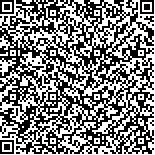| 摘要: |
| 为明确烟台牟平海洋牧场大型底栖动物群落特征、影响因子及低氧对该区域底栖动物群落特征的影响, 于2015年6月和8月分两个航次在该区域分别设置相同的18个采样点进行大型底栖动物群落特征调查和分析。对采集的生物样品进行群落特征分析, 使用生物统计软件PRIMER计算优势度指数(Y)、Shannon-Wiener多样性指数(H')、Margalef丰富度指数(D)和Pielou均匀度指数(J), 并进行等级聚类(CLUSTER)和非度量多维标度法(MDS)分析以及azti’s marine biotic index (AMBI)和 multivariate-AMBI(m-AMBI)分析。其中6月航次共采集和鉴定大型底栖动物97种, 优势类群为多毛类。总平均生物量达到10.64 g/m2, 甲壳类贡献率最高; 8月航次共采集和鉴定大型底栖动物78种, 多毛类是优势类群。总平均生物量达到9.28 g/m2, 多毛类贡献率最高。6月份的H', D, J分别为3.071±0.773、2.782±0.778和0.622±0.143; 8月份分别为3.192±0.369、2.730±0.510和0.751±0.076。通过CLUSTER聚类和MDS标序发现, 6月份和8月份底栖动物物种组成之间存在显著差异。环境因子与大型底栖动物丰度和生物量关系较大, 其中最能解释该群落丰度和生物量的环境因子为水深、水温、浊度, 而溶解氧是造成6月份与8月份丰度和生物量较大差异的主要因素。AMBI和m-AMBI分析表明该区域部分采样点大型底栖动物物种组成以污染耐受种为主, 底栖生态健康不佳。烟台牟平海洋牧场8月份季节性的缺氧环境, 已在短期内影响了底栖动物的物种组成。 |
| 关键词: 烟台牟平海洋牧场 大型底栖动物 低氧 群落结构 环境因子 |
| DOI:10.11759//hykx 20170315002 |
| 分类号: |
| 基金项目:中国科学院院重点部署项目(KZZD-EW-14); 中国科学院战略性先导科技专项(XDA11020403, XDA11020702) |
|
| Characteristics of macrobenthic communities at the Muping marine ranch of Yantai in summer |
|
YANG Dong,ZHOU Zheng-quan,ZHANG Jian-she,LIU Tian-tian,LI Xiao-jing,AI Bing-hua,LI Bao-quan,CHEN Lin-lin
|
| Abstract: |
| A survey on the characteristics of macrobenthic communities was carried out at the Muping marine ranch of Yantai during June and August 2015 to clarify the characteristics and factors affecting the macrobenthic communities and to analyze the effects of hypoxia on macrobenthic community characteristics. The PRIMER software package was used to calculate four biodiversity indices and to carry out CLUSTER, MDS ordination analyses, AMBI AZTI’s Marine Biotic Index and m-AMBI (multivariate-AMBI) to analyze community structure. A total of 97 macrobenthic species were identified in June, of which the dominant group was polychaetes. The average biomass was 18.02 g/m2, of which crustacean species contributed most. A total of 78 macrobenthic species were identified in August, of which the dominant group was polychaetes. The average biomass was 9.28 g/m2, of which polychaete species contributed most. Three biodiversity indices, the richness index, the evenness index, and the Shannon–Wiener index were 3.071 ± 0.773, 2.782 ± 0.778, and 0.622 ± 0.143 in June and 3.192 ± 0.369, 2.730 ± 0.510, and 0.751 ± 0.076 in August. The CLUSTER and MDS analyses showed a significant difference between June and August. Environmental factors, including water depth, water temperature, and turbidity were strongly correlated with the abundance and biomass of the macrobenthic communities. Dissolved oxygen was the main cause of the difference between June and August. The AMBI and M-AMBI analysis showed that the macrobenthic species were mostly tolerant and that the area had suffered a moderate disturbance. The seasonal hypoxic environment at the Muping marine ranch of Yantai in August affected species composition of the macrobenthos. |
| Key words: Muping marine ranch of Yantai macrobenthos hypoxia community structure environmental factors |
